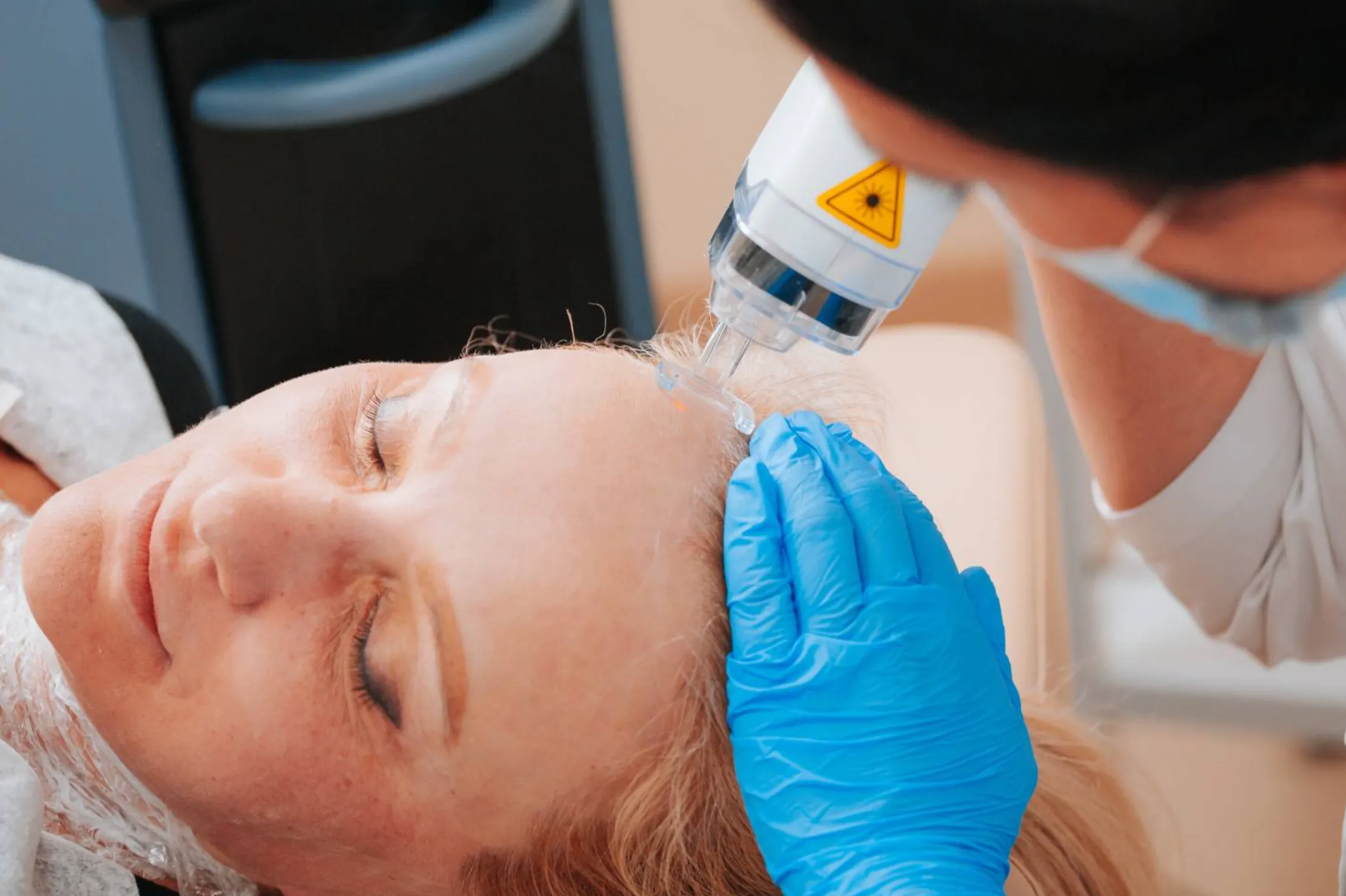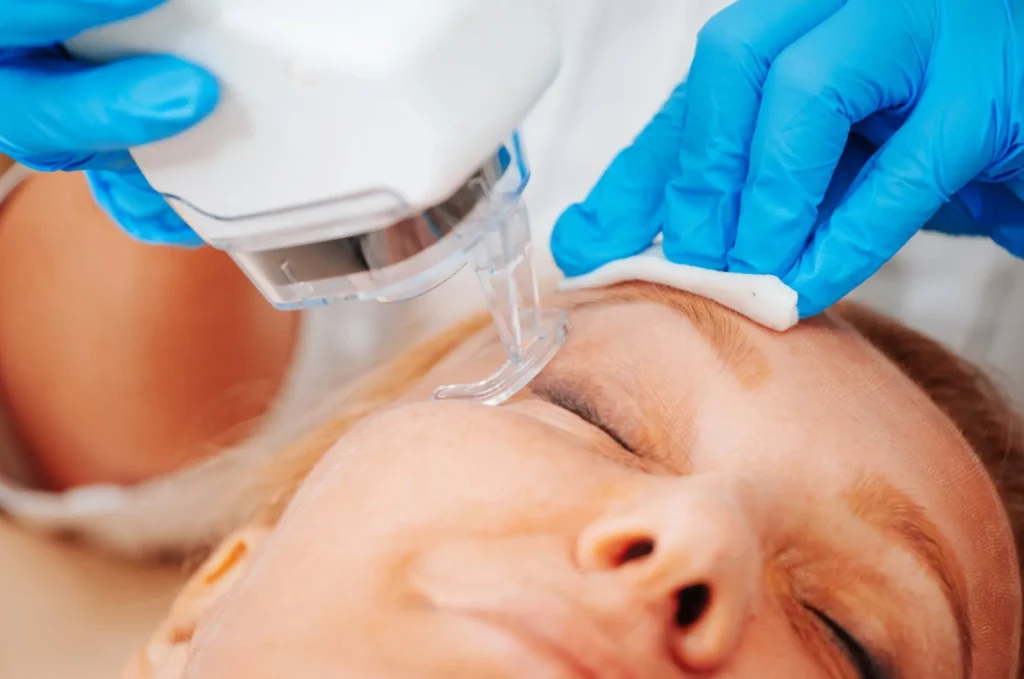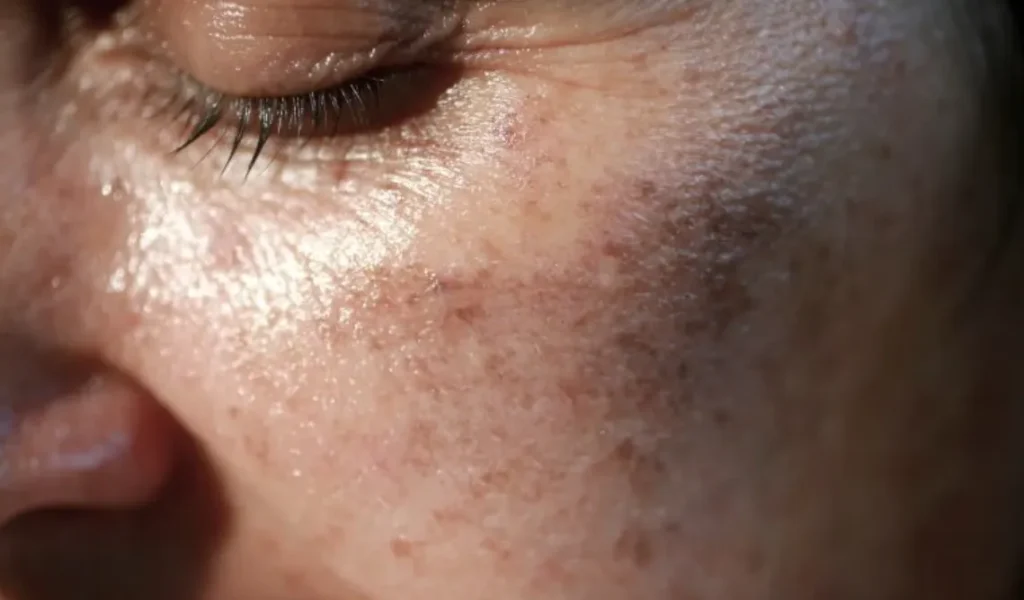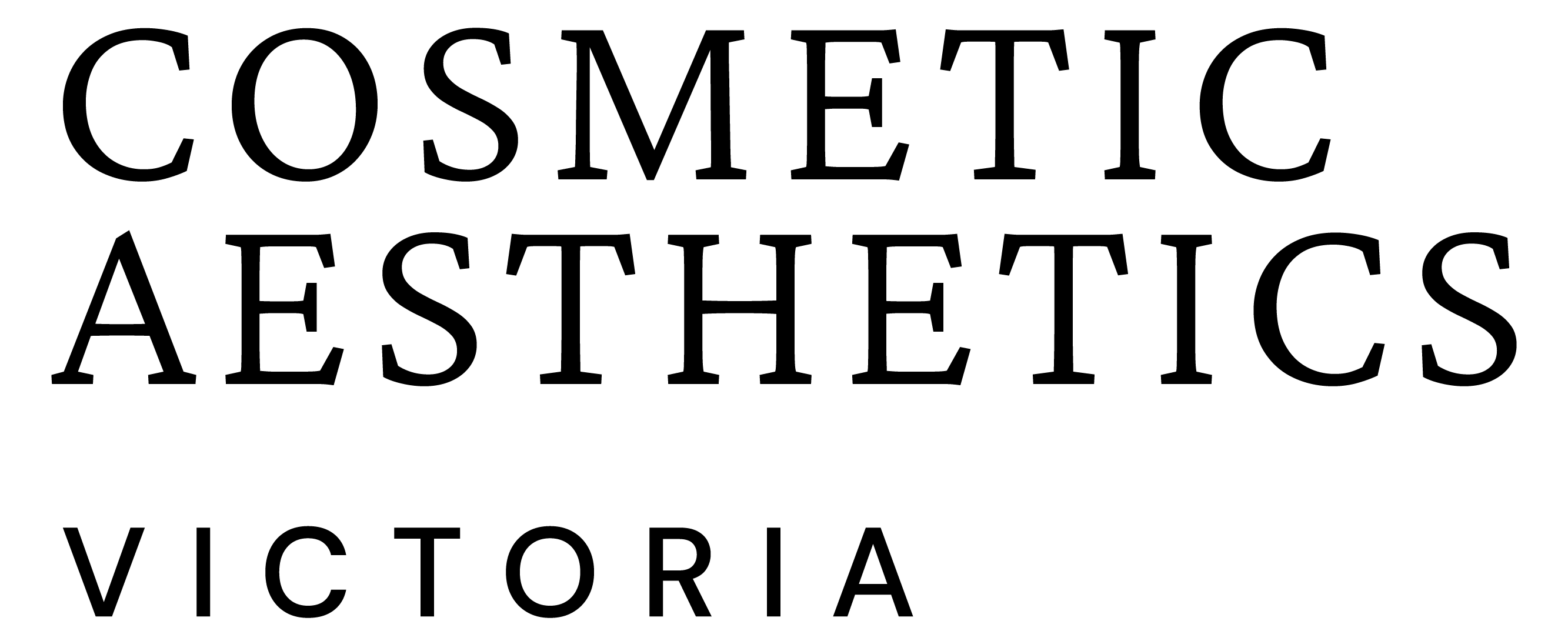
Exploring Laser Treatments For Sun Damage And Age Spots: What To Know
We’ve all been there—spending hours under the Aussie sun, whether it’s at the beach, out on a hike, or just soaking up some vitamin D in the backyard. But over time, that sun-kissed glow can turn into something less desirable: sun damage and age spots. If you’ve noticed those stubborn brown spots appearing on your skin, or perhaps fine lines and wrinkles that weren’t there a few years ago, you’re not alone.
As someone who has worked with countless clients dealing with the effects of sun exposure, I can tell you that while sun damage is inevitable, there are plenty of ways to reverse its effects. Laser treatments have become a game-changer in this area, offering a non-invasive solution that can fade those dark spots, even out your skin tone, and give you back that youthful glow.
In this article, I’ll share everything you need to know about using laser therapy to tackle sun damage and age spots. Whether you’re curious about how it works, what the process is like, or whether it’s right for you, keep reading to discover how lasers can rejuvenate your skin and restore your confidence.
What Are Age Spots And Why Do They Appear?
Age spots—also known as liver spots, sun spots, or solar lentigines—are those little brown or black marks that appear mostly on areas of skin frequently exposed to the sun. In Australia, the skin on our faces, shoulders, and hands often takes the brunt of the damage, especially as we age.
The reason these spots form is simple: prolonged exposure to UV light causes our skin to overproduce melanin, the pigment responsible for skin colour. The melanin then clumps together in certain areas, creating those distinctive brown spots. And while these spots are generally harmless, they can affect our appearance, making us look older and less vibrant.
Imagine this scenario: You’re at a family barbecue, enjoying the warmth of the sun with loved ones. You notice your skin looks a little more textured, and those spots are becoming more noticeable. Laser treatments can help reverse this by targeting the pigment in these spots and breaking them down, ultimately revealing a brighter, more even complexion.
In Melbourne, where we see a mix of sun and cool seasons, maintaining a balanced skincare routine and taking advantage of laser treatments can make a world of difference for your skin’s health and appearance.
How Laser Treatments Address Sun Damage And Age Spots?
If you’ve been wondering how exactly lasers can erase those age spots and rejuvenate your skin, you’re not alone. The idea of using concentrated light to treat sun damage might sound a bit futuristic, but it’s a well-established and highly effective treatment. Let’s take a deeper dive into how laser technology works and why it’s such a powerful solution for sun damage and pigmentation issues.
The Science Behind Laser Therapy For Hyperpigmentation
So, how do lasers actually work on sunspots? Well, laser therapy uses focused beams of light to target specific areas of your skin. In the case of hyperpigmentation (that’s the fancy term for age spots or sunspots), lasers specifically target melanin, the pigment responsible for dark spots.
Think of it this way: You’re aiming a spotlight at a dark patch of skin. The light from the laser heats up the pigment in the spots without harming the surrounding skin. The heat breaks down the melanin, which the body then naturally eliminates over time. This process leads to clearer, more even-toned skin.
I recall a client of mine, Emily, who came in for sunspot removal after years of working outdoors in the Australian sun. She was initially concerned about whether the laser could effectively break up the dark spots without causing further irritation. After a few treatments, her skin showed remarkable improvement. The spots were significantly lighter, and her skin felt smoother and more even.
One of the advantages of laser treatments is that they not only target pigmentation but also stimulate collagen production. Collagen is what gives your skin its structure and firmness, and as we age, our collagen production slows down. By stimulating collagen, lasers improve skin elasticity and reduce fine lines, giving you a younger-looking appearance overall.

Types Of Laser Treatments For Sun Damage And Age Spots
Laser treatments can be broadly classified into two categories: ablative and non-ablative lasers. Each type has its benefits depending on the depth of the treatment required and the specific concerns you’re addressing.
Ablative Lasers:
Ablative lasers remove the top layers of your skin, which means they’re more invasive but also more effective for deep sun damage. They work by vaporising damaged skin cells, allowing new skin to regenerate. Think of this as a fresh start for your skin!
- CO2 Laser: This is one of the most commonly used ablative lasers for more intense skin resurfacing. It’s particularly effective for treating deep wrinkles, severe sun damage, and large age spots. The CO2 laser creates tiny thermal columns in the skin, which stimulate collagen production while removing layers of damaged skin.
- Erbium:YAG Laser: This laser targets the outermost layers of the skin, making it ideal for treating superficial sunspots and fine lines. It’s a bit gentler than the CO2 laser but still highly effective.
When I first tried the CO2 laser on a patient with deep sun damage on her face, the results were remarkable. She experienced redness and peeling, which is typical for this procedure, but after a few weeks, the sunspots had faded, and her skin looked smoother and brighter.
Non-Ablative Lasers:
Non-ablative lasers, on the other hand, don’t remove the top layer of skin. Instead, they work by heating up the deeper layers of your skin to stimulate collagen production and improve skin texture. They’re less invasive, meaning they come with less downtime, making them ideal for people with busy lifestyles.
- Fraxel Lasers: Fraxel Restore is one of the most well-known non-ablative lasers, which uses fractional technology to create tiny columns of treated skin surrounded by untreated skin. This allows the skin to heal faster and reduces downtime. Fraxel is great for treating fine lines, pigmentation, and uneven skin tone.
- PicoSure and PicoPlus Lasers: These are some of the newer technologies in the market. The lasers deliver extremely rapid pulses of energy to break down pigmentation at a deeper level without causing harm to the skin’s surface. I’ve seen excellent results with these lasers, especially for clients with sensitive skin..
Benefits Of Laser Treatments For Sun Damage
Laser treatments are increasingly becoming the go-to solution for sun-damaged skin, and for good reason. They’re not just about removing dark spots—these treatments offer a range of benefits that go far beyond what topical products can achieve. If you’re considering a laser treatment for your sun damage or age spots, here’s what you can expect in terms of benefits.
1. Improved Skin Texture And Tone
One of the most noticeable benefits of laser treatments is the improvement in skin texture and tone. When you’ve spent years under the Australian sun (as many of us have), your skin can start to show signs of uneven pigmentation, roughness, and loss of elasticity. Laser treatments help smooth out these imperfections by removing the damaged layers of skin and promoting new skin growth.
The beauty of laser treatments is that they don’t just target the visible surface imperfections; they work beneath the skin too, stimulating collagen production. Collagen is the protein that gives your skin its firmness and elasticity. As we age, collagen production slows down, but lasers help to kick-start this process, leaving you with a smoother, more even complexion.
2. Reduction Of Sun Spots And Pigmentation
If you’ve been fighting with stubborn sun spots or dark patches of skin, laser treatment can be a game-changer. These spots are a result of hyperpigmentation, where the skin produces an excess of melanin, often due to UV exposure.
Laser treatments work by targeting these pigmented areas with precise light energy, which breaks up the melanin and allows the body to naturally eliminate it. The result is a noticeable reduction in the appearance of sunspots, leaving your skin tone looking more uniform.
3. Non-Invasive And Low Downtime
In the past, dealing with skin imperfections like sun damage often meant resorting to invasive procedures, but laser treatments have revolutionised the process by offering non-invasive solutions with minimal downtime.
For instance, non-ablative lasers (like Fraxel) don’t remove layers of skin; instead, they work by creating tiny thermal zones in the skin that stimulate collagen production and rejuvenate the skin’s texture. This means that treatments like these generally don’t require significant recovery time. You may experience some mild redness, like a mild sunburn, but it typically fades within a few hours to a couple of days.
4. Collagen Stimulation For Firmer Skin
Let’s talk about collagen, the skin’s natural “elasticity booster”. Collagen helps to keep your skin firm and smooth. However, the constant sun exposure we get here in Australia can cause collagen to break down, resulting in sagging skin and the formation of wrinkles.
Laser treatments do wonders for collagen stimulation. Both ablative and non-ablative lasers work by creating controlled injury to the skin, which, in turn, encourages the skin to repair itself by producing more collagen. This process not only helps with pigmentation but also improves the overall appearance of fine lines and wrinkles.

What To Expect Before, During, And After Your Laser Treatment?
If you’re considering laser treatment to tackle sun damage or age spots, it’s natural to have some questions about what the process involves. You’re likely wondering what happens in the lead-up to the procedure, what it feels like during the treatment, and how your skin will react afterwards. Rest assured, understanding these steps can help ease any concerns and ensure you’re fully prepared for the experience.
Preparation For Your Laser Treatment
- Book a Consultation with a Qualified Professional
- Discuss your skin concerns, medical history, and treatment goals.
- Mention any medications or skincare products you’re using (e.g., retinoids), as you may need to stop them temporarily.
- Avoid Sun Exposure
- Stay out of direct sunlight for at least two weeks before your treatment.
- Avoid tanning or getting sunburnt, as this increases the risk of irritation or burns during the procedure.
- If you’ve had recent sun exposure (e.g., beach day or outdoor event), reschedule your appointment.
- Discontinue Certain Skincare Products
- Avoid products that increase skin sensitivity, such as:
- Glycolic acid
- Strong exfoliants
- Glycolic acid
- Follow your practitioner’s advice on when to stop using these products before treatment.
The Laser Treatment Experience: What Happens During The Procedure?
So, you’ve prepped, and now you’re ready for your session! The actual laser treatment typically lasts between 20 to 45 minutes, depending on the size of the area being treated. During the procedure, you’ll likely feel a sensation that can range from a warm, tingling feeling to a mild stinging, often described as the sensation of a rubber band snapping against your skin.
Don’t worry, though—most modern laser treatments use cooling systems or apply topical numbing creams to keep you comfortable throughout the procedure.
Recovery And Aftercare: How To Ensure Optimal Results And Minimise Risks?
After your laser treatment, your skin will go through a healing process, and how you care for your skin during this period is critical to ensuring the best results. Immediately following treatment, it’s normal to experience some redness, swelling, and a sensation akin to mild sunburn. These effects usually subside within a few hours to a couple of days.
For deeper treatments, like ablative lasers, the recovery time might be a little longer. You could experience some peeling or flaking as your skin renews itself. During this time, it’s crucial to avoid picking at your skin (as tempting as it may be). Allow the peeling to occur naturally, as this is part of the skin regeneration process.
The best advice I can give from personal experience is to always follow the aftercare instructions provided by your practitioner. Keeping your skin clean and moisturised is a must. You’ll likely be advised to use a gentle, hydrating moisturiser and avoid any harsh skincare products like acids or scrubs for a few weeks after your treatment. I’ve found that a good barrier cream or ointment (which your practitioner will recommend) can help soothe your skin as it heals. Most importantly, sun protection is non-negotiable.
Risks And Side Effects Of Laser Treatments
| Category | Risk/Side Effect | Description | Notes/Examples |
| Common Temporary Side Effects | Redness | Appears like a mild sunburn immediately after treatment; fades within hours to a couple of days. | Normal part of healing; no cause for concern. |
| Swelling | Puffiness or inflammation, especially on larger treated areas. | The user experienced swelling after Fraxel; aloe vera gel helped reduce it quickly. | |
| Itching/Dryness | Skin may feel tight or dry as it heals, particularly after resurfacing treatments. | Moisturiser aids healing and reduces discomfort. | |
| Combined Case Example | Redness, swelling, and dryness all resolved with proper aftercare. | Client Claire from Adelaide recovered within a week by following aftercare. | |
| Potential Serious Complications | Hyperpigmentation | Darkening of treated areas due to melanin overproduction. | More common in clients with darker skin tones, especially with IPL lasers. |
| Hypopigmentation | Lightening of treated skin, often due to overly aggressive treatment. | Tends to fade over time as skin heals. | |
| Scarring | Can result if the treated area isn’t properly cared for post-treatment. | Avoid picking/scratching; follow aftercare closely. | |
| Infection | There is a small risk if the skin isn’t kept clean. | Preventable with hygiene and aftercare. | |
| Cold Sore Reactivation | Laser can trigger outbreaks in people prone to the herpes simplex virus. | Client Fiona was given antivirals beforehand, successfully preventing an outbreak. |
Long-Term Results And Maintenance
One of the most appealing aspects of laser treatments for sun damage and age spots is the potential for long-lasting results. But like anything in life, good things often require a bit of upkeep. While lasers can work wonders in treating pigmentation issues and rejuvenating the skin, it’s important to understand what you can expect in the long term and how you can maintain the results.
How Long Will The Results Last?
Laser treatments for sun damage and age spots can produce long-lasting results, especially if you follow the recommended aftercare instructions and practice good sun protection. Many people notice a significant improvement in their skin’s tone, texture, and overall appearance within weeks after treatment, with sun spots and pigmentation fading gradually as the skin heals.
However, it’s important to note that while laser treatments can effectively address sunspots, they don’t stop the clock. Sun damage continues as long as you’re exposed to the sun, which means without proper sun protection, age spots and pigmentation could start to return. This is particularly true for individuals who enjoy an active, outdoor lifestyle, where the UV index can be high, even during cooler months.
Maintenance Treatments For Lasting Effects
To maintain the results of your laser treatment, it’s not enough to just have one session and forget about your skin. As I’ve mentioned to many of my clients, sun protection is crucial—not just during recovery, but for the long term. Using a broad-spectrum sunscreen with SPF 30 or higher every single day is non-negotiable if you want to preserve your laser treatment results.
A common misconception I’ve seen is that once you’ve had laser therapy, you can stop worrying about your skin. But protecting your skin from further UV damage is the best way to prolong the benefits of your treatment. I’ve had clients who didn’t follow this advice, and unfortunately, they saw their pigmentation return within a few months due to repeated sun exposure.
In some cases, clients may opt for a maintenance session every 6 to 12 months, depending on their skin condition and lifestyle. This helps keep the skin rejuvenated and ensures that any new pigmentation that appears is addressed promptly.
Laser treatments for sun damage and age spots are a revolutionary way to restore your skin’s natural radiance and even out your complexion. Whether you’re battling stubborn sunspots or the effects of years spent in the Australian sun, these treatments offer a non-invasive and effective solution. By targeting pigmentation, stimulating collagen production, and improving skin texture, laser therapies can turn back the clock and leave you with smoother, clearer skin.
But like any treatment, laser therapy requires commitment—proper preparation, adherence to aftercare, and ongoing sun protection are crucial for maintaining long-lasting results. So, if you’re ready to reveal brighter, more even-toned skin, laser treatments might just be the answer you’ve been looking for.

